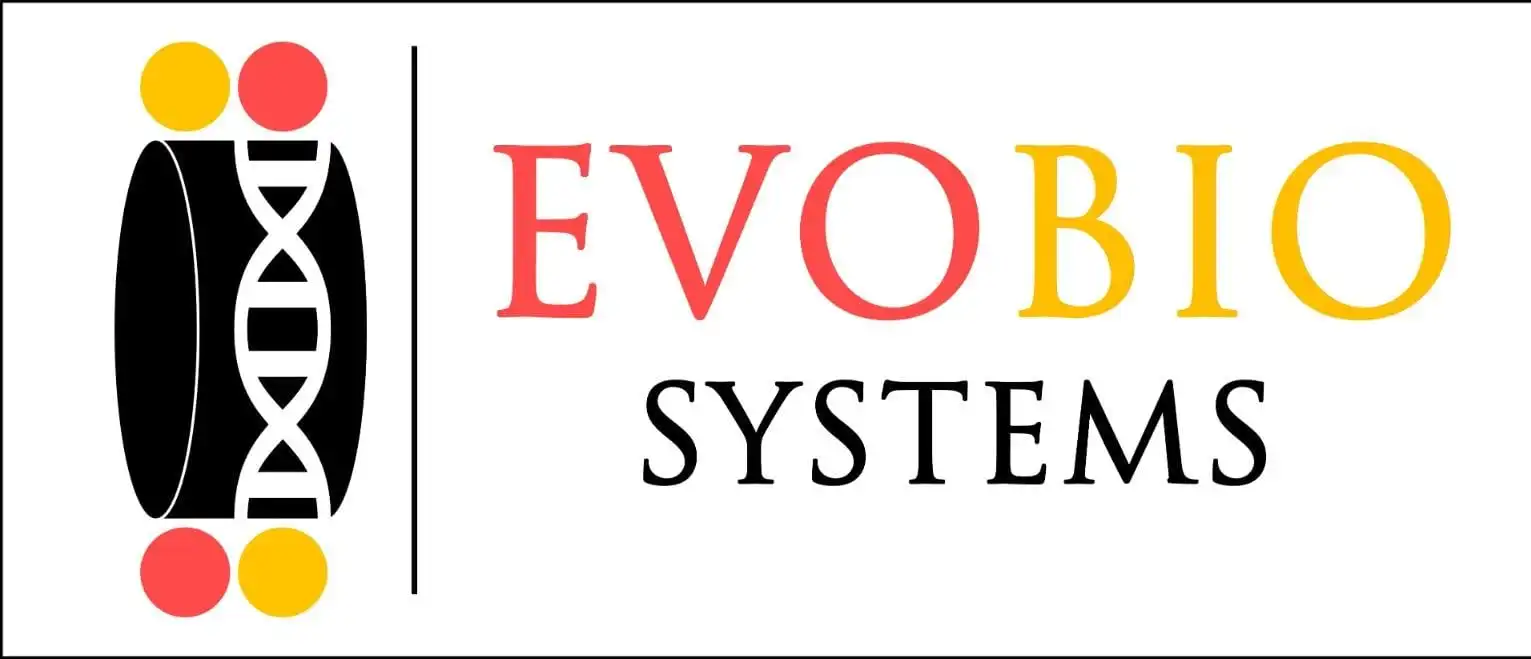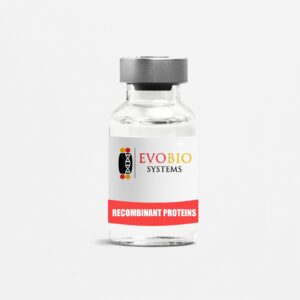Showing 19–27 of 65 results
-
Recombinant Human AITRL (TNFSF18)
Product Details
Gene ID 8995 Accession Q9UNG2 Alternative Name Activation-inducible TNF-related ligand, AITRL, Glucocorticoid-induced TNF-related ligand, GITRL, hGITRL, Tumor necrosis factor ligand superfamily member 18, TNFSF18, TL-6<br/>Recombinant Human Activation-Induced TNFR Member Ligand (TNFSF18) Species Human Source E. coli Description TNFSF18 is a transmembrane glycoprotein which is expressed in vascular endothelial cells as well as neurons, antigen presenting cells, CD4-CD8 double negative thymic precursors, and in the eye. TNFSF18 works to mediate the interactions between T cells and endothelial cells, and T cell growth. It has been shown that TNFSF18’s expression is transiently up-regulated by proinflammatory stimulation. Accession Q9UNG2 Functions N.A. Formulation Lyophilized from a 0.2 micron filtered solution in Tris and salt Solubility Reconstitute at 0.1 mg/mL in PBS containing at least 0.1% human or bovine serum albumin. Appearance Lyophilized Powder Molecular Weight 14.2 Purity >95% as determined by SDS-PAGE Concentration < 1.0 EU/μg of recombinant protein as determined by the LAL method. Shipping Condition Ambient Temperature Storage Condition The lyophilized protein is stable for at least one year from date of receipt at -70?C. Upon reconstitution, this cytokine can be stored in working aliquots at 2? – 8?C for one month, or at -20?C for six months, with a carrier protein without detectable loss of activity. Avoid repeated freeze/thaw cycles. $0.00(No) -
Recombinant Human AITRL (TNFSF18)
Product Details
Gene ID 8995 Accession Q9UNG2 Alternative Name Activation-inducible TNF-related ligand, AITRL, Glucocorticoid-induced TNF-related ligand, GITRL, hGITRL, Tumor necrosis factor ligand superfamily member 18, TNFSF18, TL-6<br/>Recombinant Human Activation-Induced TNFR Member Ligand (TNFSF18) Species Human Source E. coli Description TNFSF18 is a transmembrane glycoprotein which is expressed in vascular endothelial cells as well as neurons, antigen presenting cells, CD4-CD8 double negative thymic precursors, and in the eye. TNFSF18 works to mediate the interactions between T cells and endothelial cells, and T cell growth. It has been shown that TNFSF18’s expression is transiently up-regulated by proinflammatory stimulation. Accession Q9UNG2 Functions N.A. Formulation Lyophilized from a 0.2 micron filtered solution in Tris and salt Solubility Reconstitute at 0.1 mg/mL in PBS containing at least 0.1% human or bovine serum albumin. Appearance Lyophilized Powder Molecular Weight 14.2 Purity >95% as determined by SDS-PAGE Concentration < 1.0 EU/μg of recombinant protein as determined by the LAL method. Shipping Condition Ambient Temperature Storage Condition The lyophilized protein is stable for at least one year from date of receipt at -70?C. Upon reconstitution, this cytokine can be stored in working aliquots at 2? – 8?C for one month, or at -20?C for six months, with a carrier protein without detectable loss of activity. Avoid repeated freeze/thaw cycles. $0.00(No) -
Recombinant Human AKT1 (N-GST tag)
Product Details
Gene ID N/A Accession NM_005163 Alternative Name PKB; RAC; PRKBA; MGC99656; RAC-ALPHA Species Human Source Insect cells Description AKT1/PKBa is a serine/threonine kinase that belongs to the AKT family. AKT1 is activated in cells in response to diverse stimuli such as hormones, growth factors and extracellular matrix components and is involved in glucose metabolism, transcription, survival, cell proliferation, angiogenesis, and cell motility . AKT1 is frequently overexpressed and active in many types of human cancers including cancers of colon, breast, brain, pancreas and prostate as well as lymphomas and leukemias .? Accession NM_005163 Functions The specific activity of AKT1 was determined to be 125 nmol /min/mg as per activity assay protocol. Formulation 50mM Tris-HCl, pH 7.5, 150mM NaCl, 10mM glutathione, 0.1mM EDTA, 0.25mM DTT, 0.1mM PMSF, 25% glycerol. Solubility N/A Appearance Liquid Molecular Weight 85 Purity 70% – 90% Shipping Condition Dry Ice Storage Condition Store product at ?70?C. For optimal storage, aliquot target into smaller quantities after centrifugation and store at recommended temperature. For most favorable performance, avoid repeated handling and multiple freeze/thaw cycles. $0.00(No) -
Recombinant Human AKT2 (N-GST tag)
Product Details
Gene ID N/A Accession NM_001626 Alternative Name PRKBB; PKBBETA; RAC-BETA Species Human Source Insect cells Description AKT2 or Protein Kinase B ? (PKB?) is a serine/threonine kinase that is a member of the AKT family. AKT2 like the other AKT members is activated in cells in response to diverse stimuli such as hormones, growth factors and extracellular matrix components and is involved in glucose metabolism, transcription, survival, cell proliferation, angiogenesis, and cell motility. The PI3K generates phosphatidylinositol-3,4,5-trisphosphate (PIP3), a lipid second messenger essential for the translocation of AKT2 to the plasma membrane where it is phosphorylated and activated by phosphoinositide-dependent kinase-1 (PDK-1). Accession NM_001626 Functions The specific activity of AKT2 was determined to be 43 nmol /min/mg as per activity assay protocol. Formulation 50mM Tris-HCl, pH 7.5, 150mM NaCl, 0.25mM DTT, 0.1mM EGTA, 0.1mM EDTA, 0.1mM PMSF, 25% glycerol. Solubility N/A Appearance Liquid Molecular Weight 85 Purity 70% – 90% Shipping Condition Dry Ice Storage Condition Store product at ?70?C. For optimal storage, aliquot target into smaller quantities after centrifugation and store at recommended temperature. For most favorable performance, avoid repeated handling and multiple freeze/thaw cycles. . $0.00(No) -
Recombinant Human AKT2 (N-His tag)
Product Details
Gene ID N/A Accession NM_001626 Alternative Name PRKBB; PKBBETA; RAC-BETA Species Human Source Insect cells Description AKT2 or Protein Kinase B ? (PKB?) is a serine/threonine kinase that is a member of the AKT family. AKT2 like the other AKT members is activated in cells in response to diverse stimuli such as hormones, growth factors and extracellular matrix components and is involved in glucose metabolism, transcription, survival, cell proliferation, angiogenesis, and cell motility. The PI3K generates phosphatidylinositol-3,4,5-trisphosphate (PIP3), a lipid second messenger essential for the translocation of AKT2 to the plasma membrane where it is phosphorylated and activated by phosphoinositide-dependent kinase-1 (PDK-1). Accession NM_001626 Functions The specific activity of AKT2 was determined to be 44 nmol /min/mg as per activity assay protocol. Formulation 50mM NaPhosphate, pH7.0, 300mM NaCl, 150mM imidazole, 0.1mM PMSF, 0.2mM DTT, 25% glycerol. Solubility N/A Appearance Liquid Molecular Weight 58 Purity 70% – 90% Shipping Condition Dry Ice Storage Condition Store product at ?70?C. For optimal storage, aliquot target into smaller quantities after centrifugation and store at recommended temperature. For most favorable performance, avoid repeated handling and multiple freeze/thaw cycles. $0.00(No) -
Recombinant Human AKT3 (N-GST tag)
Product Details
Gene ID N/A Accession NM_005465 Alternative Name PKBG; PRKBG; STK-2; RAC-gamma; RAC-PK-gamma; DKFZP434N0250 Species Human Source Insect cells Description ?AKT 3 or Protein Kinase B ? (PKB?) is a serine/threonine kinase that is a member of the AKT family. AKT 3 is activated in cells exposed to diverse stimuli such as hormones, growth factors, and extracellular matrix components . AKT 3 phosphorylates and regulates the function of many cellular proteins involved in processes that include cellular metabolism, survival/apoptosis, and proliferation. Recent evidence indicates that AKT 3 is frequently overexpressed in many types of human cancers including breast and prostate .? Accession NM_005465 Functions The specific activity of AKT3 was determined to be 206 nmol /min/mg as per activity assay protocol. Formulation 50mM Tris-HCl, pH 7.5, 150mM NaCl, 0.25mM DTT, 0.1mM EGTA, 0.1mM EDTA, 0.1mM PMSF, 25% glycerol. Solubility N/A Appearance Liquid Molecular Weight 85 Purity 70% – 90% Shipping Condition Dry Ice Storage Condition Store product at ?70?C. For optimal storage, aliquot target into smaller quantities after centrifugation and store at recommended temperature. For most favorable performance, avoid repeated handling and multiple freeze/thaw cycles. $0.00(No) -
Recombinant Human ALK (N-GST tag)
Product Details
Gene ID N/A Accession NM_004304 Alternative Name ALK (Ki-1), CD246, NBLST3, TFG/ALK Species Human Source Insect cells Description ?ALK or anaplastic lymphoma kinase is a receptor tyrosine kinase that was originally identified as a member of the insulin receptor subfamily that acquires transforming capability when truncated and fused to NPM (nucleophosmin) in the t(2;5) chromosomal rearrangement associated with ALCL Many chromosomal rearrangements leading to enhanced ALK activity have been described and are implicated in a number of cancer types . In the nervous system, ALK in the presence of ligand appears essential for axonal guidance, whereas in the absence of ligand, ALK expression can lead to developmental neuronal apoptosis . Accession NM_004304 Functions The specific activity of ALK was determined to be 24 nmol /min/mg as per activity assay protocol. Formulation 50mM sodium, pHosphate, pH 7.0, 300mM NaCl, 150mM imidazole, 0.1mM PMSF, 0.25mM DTT, 25% glycerol. Solubility N/A Appearance Liquid Molecular Weight 90 Purity 70% – 90% Shipping Condition Dry Ice Storage Condition Store product at ?70?C. For optimal storage, aliquot target into smaller quantities after centrifugation and store at recommended temperature. For most favorable performance, avoid repeated handling and multiple freeze/thaw cycles. $0.00(No) -
Recombinant Human ALK1 (N-GST tag)
Product Details
Gene ID N/A Accession NM_000020 Alternative Name ACVRL1, ACVRLK1, ALK1, HHT, HHT2, ORW2, SKR3, ALK1, TSR-I Species Human Source Insect cells Description ?ALK1 is a serine/threonine-protein kinase receptor R3 precursor that mediates signal by TGF? superfamily . ALK1 functions as a TGF? type I receptor in endothelial cells and is responsible for human hereditary hemorrhagic telangiectasia (HHT) type II. Distinct Smad proteins (i.e., Smad2/Smad3 and Smad1/Smad5) show interaction with ALK1 and mediate TGF? signaling. Northern blot and RT-PCR analysis show that ALK1 specifically induces expression of Smad6, Smad7, Id1, Id2, endoglin, STAT1, and interleukin 1 receptor in endothelial cells. ALK1 expression in inflammatory myofibroblastic tumor of the urinary bladder have also has been reported . Accession NM_000020 Functions The specific activity of ALK1 was determined to be 22 nmol /min/mg as per activity assay protocol. Formulation 50mM Tris-HCl, pH 7.5, 150mM NaCl, 0.25mM DTT, 0.1mM EGTA, 0.1mM EDTA, 0.1mM PMSF, 25% glycerol. Solubility N/A Appearance Liquid Molecular Weight 64 Purity 70% – 90% Shipping Condition Dry Ice Storage Condition Store product at ?70?C. For optimal storage, aliquot target into smaller quantities after centrifugation and store at recommended temperature. For most favorable performance, avoid repeated handling and multiple freeze/thaw cycles. $0.00(No) -
Recombinant Human ALK2 (N-GST tag)
Product Details
Gene ID N/A Accession NM_001105 Alternative Name ACVR1, ACTRI, ACVR1A, ACVRLK2, FOP, SKR1, TSRI Species Human Source Insect cells Description ALK 2 is a receptor serine/threonine kinase that is member of the ALK family and is upstream of signaling pathway involving the SMAD proteins especially SMAD1/5/8. Knockdown of ALK2, but not TGF?RI (ALK5), abrogates endoglin-mediated decrease in cell motility of prostate cancer cells and constitutively active ALK2 is sufficient to restore a low-motility phenotype in endoglin deficient cells . Therefore, endoglin decreases prostate cancer cell motility through activation of the ALK2-Smad1 pathway. ALK2 is the key gene involved in Fibrodysplasia ossificans progressiva (FOP), a rare autosomal dominant congenital disorder characterized by progressive heterotopic bone formation in muscle tissues . Accession NM_001105 Functions The specific activity of ALK2 was determined to be 39 nmol /min/mg as per activity assay protocol. Formulation 50mM Tris-HCl, pH 7.5, 150mM NaCl, 0.25mM DTT, 0.1mM EGTA, 0.1mM EDTA, 0.1mM PMSF, 25% glycerol. Solubility N/A Appearance Liquid Molecular Weight 67 Purity 70% – 90% Shipping Condition Dry Ice Storage Condition Store product at ?70?C. For optimal storage, aliquot target into smaller quantities after centrifugation and store at recommended temperature. For most favorable performance, avoid repeated handling and multiple freeze/thaw cycles. $0.00(No)






